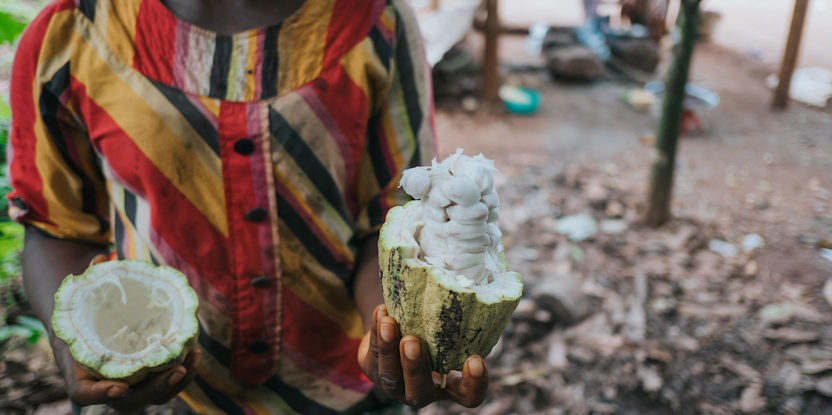
Global demand for goods produced under legal and sustainability standards is on the rise. These days, many consumers demand reassurance that they are not generating negative impacts on the forest with the products they buy.
Cameroon, a net exporter of tropical commodities, is naturally concerned by these new market requirements.
For the past fifteen years, the Cameroonian government has invested heavily in ensuring the production of legal timber for export to the European Union under the framework of the FLEGT Action Plan (Forest Law Enforcement, Governance, and Trade). At the same time, private certification schemes, such as the Forest Stewardship Council (FSC), have developed sustainable forest management standards, as well as a robust traceability system allowing certified timber to reach consumers.
We realize today that all the efforts to improve the governance of the logging sector, even if they are not all successful, put it at the forefront of the fight to improve land use and natural resource management in Cameroon. In comparison, agricultural commodities have made much less progress in developing tools for sustainable production.
Such is the case with cocoa, as demonstrated through a workshop organized in Douala held from Sept. 25 to 26 by the Center for International Forestry Research (CIFOR), the Center for International Cooperation in Agronomic Research for Development (CIRAD), Cameroon’s Cocoa and Coffee Sector Development Fund (FODECC), the Cocoa and Coffee Interprofessional Council (CICC), the Sustainable Trade Initiative (IDH) and the World Wide Fund for Nature (WWF).
Despite the importance of this sector for the Cameroonian economy — 1 percent of GDP, or 350 million euros ($386 million) in trade surplus – there is currently no precise definition of what legal cocoa is, as demonstrated in a recent study published by CIRAD and CIFOR. Several criteria can be applied to define legal cocoa, such as quality standards, compliance with the labor code, or the location of cocoa plantations outside the permanent forest land. But these have never been discussed, brought together and even less systematically monitored by state services.
Even though several private certification organizations have worked for years on a definition of sustainable cocoa, none of these approaches is fully convincing. They are not recognized by the Cameroonian government, even though the cocoa certified by the Rainforest Alliance-UTZ represented a third of the volume exported during the 2018-2019 season. However, a national standard for sustainable and traceable cocoa is being developed, but how it will be implemented remains unclear.
One of the constraints to guarantee the sale of sustainable cocoa on the markets is product traceability. This process encounters two major difficulties in Cameroon. On the one hand, cocoa is produced by around 300,000 farmers who are not registered and act independently according to market prices and commercial opportunities.
Today there is no public or private system to link the sales made by independent producers or even cooperatives to the hundreds of thousands of hectares that supply these beans. On the other hand, as Simon Bassanaga, an elected member of the CICC points out, “it is very complicated to locate cocoa growing areas, especially when they are established in forest areas, because they are agroforestry systems that are difficult to distinguish from a secondary forest. Even the use of drones does not completely resolve this difficulty. ”
The desire to reduce the footprint of cocoa production on the forest and to produce cocoa without deforestation is a more recent concern, but one which quickly imposed itself on exporters under pressure from the European Union.
This requirement is not sufficiently considered in cocoa sustainability certification standards and it encourages innovative experiences to meet this challenge. This is the case of the Green Cocoa Landscapes initiative in Cameron which, as explained by Violaine Berger, project manager at IDH: “Aims to combine monitoring of production basins to limit deforestation while relying on local elected officials to coordinate support for cocoa farmers.”
The production of legal, sustainable and deforestation-free cocoa therefore remains an arduous task in Cameroon, but this challenge cannot be overlooked because these requirements will regulate access to the main markets in the medium term. New regulations must therefore be developed and implemented by Cameroonian stakeholders.
It is an opportunity, as we have seen in the timber sector, to think about new forms of governance where the State focuses on certain sovereign functions while other private actors are delegated certain tasks for which they have demonstrated their effectiveness.
This is the opinion of Yannick Mboba, representative of UTZ in Cameroon: hundreds of thousands of producers. Some of these functions are now largely performed by private companies who have an interest in increasing the volume produced, improving its quality, or ensuring a form of traceability of cocoa beans. The state must recognize these skills to better focus on its sovereign functions and increase its performance. ”
This hybrid form of regulation of the cocoa sector in Cameroon, on the basis of an effective sharing of governance functions between public authorities and private initiatives, will probably be at the heart of the debates between the actors of the sector in the coming months.
We want you to share Forests News content, which is licensed under Creative Commons Attribution-NonCommercial-ShareAlike 4.0 International (CC BY-NC-SA 4.0). This means you are free to redistribute our material for non-commercial purposes. All we ask is that you give Forests News appropriate credit and link to the original Forests News content, indicate if changes were made, and distribute your contributions under the same Creative Commons license. You must notify Forests News if you repost, reprint or reuse our materials by contacting forestsnews@cifor-icraf.org.